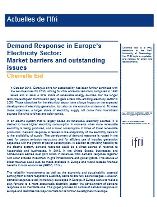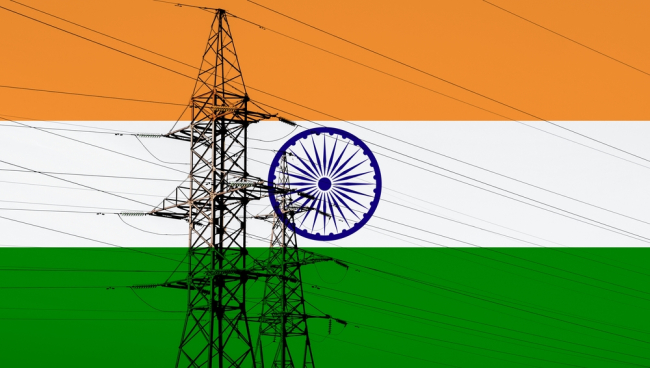Demand Response in Europe’s Electricity Sector: Market barriers and outstanding issues

In October 2014, Europe’s drive for sustainability has been further continued with the set objectives for 2030, aiming for 40% emission reduction compared to 1990 levels and at least a 27% share of renewable energy sources. For the longer term, the European Commission (EC) targets a zero CO2 emitting electricity sector in 2050. Those objectives for the electricity sector have a large impact on the expected development of electricity generation, but also on the evolution of demand. To meet those objectives, a larger share of electricity supply will come from intermittent sources like wind turbines and solar panels.
In an electric system that is largely based on renewable electricity sources, it is desired to have higher electricity consumption in moments when more renewable electricity is being produced, and a lower consumption in times of lower renewable production. Demand response is related to the adaptability of the electricity demand to the availability of supply. The development of demand response is rooted in the need for carbon emission reductions and for efficient use of installed generation capacities with the growth of power consumption. In addition to providing flexibility to the electric system, demand response could be a direct source of revenue to households and businesses. In 2013, in the United States, businesses and homeowners earned over $2.2 billion in revenues from demand response together with other avoided investment in grid infrastructure and power plants. This source of direct revenue could also be made available in Europe and would release financial benefits to local economies (SEDC, 2014).
The reliability improvements as well as the economic and sustainability potential coming from a more responsive electricity demand are fully acknowledged. However, demand response is still immaturely developed in Europe. If Europe wants to make a step forward to a more sustainable electricity sector, the development of demand response is an inevitable one. This paper provides an outline of demand response in Europe and identifies the major barriers for its further development in Europe.
Download the PDF to read further:

Also available in:
Regions and themes
ISBN / ISSN
Share
Download the full analysis
This page contains only a summary of our work. If you would like to have access to all the information from our research on the subject, you can download the full version in PDF format.
Demand Response in Europe’s Electricity Sector: Market barriers and outstanding issues
Related centers and programs
Discover our other research centers and programsFind out more
Discover all our analysesIndia’s Broken Power Economics : Addressing DISCOM Challenges
India’s electricity demand is rising at an impressive annual rate of 9%. From 2014 to 2023, the country’s gross domestic product (GDP) surged from 1.95 trillion dollars ($) to $3.2 trillion (constant 2015 US$), and the nation is poised to maintain this upward trajectory, with projected growth rates exceeding 7% in 2024 and 2025. Correspondingly, peak power demand has soared from 136 gigawatts (GW) in 2014 to 243 GW in 2024, positioning India as the world’s third-largest energy consumer. In the past decade, the country has increased its power generation capacity by a remarkable 190 GW, pushing its total installed capacity beyond 400 GW.
The Troubled Reorganization of Critical Raw Materials Value Chains: An Assessment of European De-risking Policies
With the demand for critical raw materials set to, at a minimum, double by 2030 in the context of the current energy transition policies, the concentration of critical raw materials (CRM) supplies and, even more, of refining capacities in a handful of countries has become one of the paramount issues in international, bilateral and national discussions. China’s dominant position and successive export controls on critical raw materials (lately, germanium, gallium, rare earths processing technology, graphite, antimony) point to a trend of weaponizing critical dependencies.
The Aluminum Value Chain: A Key Component of Europe’s Strategic Autonomy and Carbon Neutrality
The United States of America (US), Canada and the European Union (EU) all now consider aluminum as strategic. This metal is indeed increasingly used, especially for the energy transition, be it for electric vehicles (EVs), electricity grids, wind turbines or solar panels.
The EU Green Deal External Impacts: Views from China, India, South Africa, Türkiye and the United States
Ahead of June 2024 European elections and against the backdrop of growing geopolitical and geoeconomic frictions, if not tensions, between the EU and some of its largest trade partners, not least based on the external impacts of the European Green Deal (EGD), Ifri chose to collect views and analyses from leading experts from China, India, South Africa, Türkiye and the United States of America (US) on how they assess bilateral relations in the field of energy and climate, and what issues and opportunities they envisage going forward.












